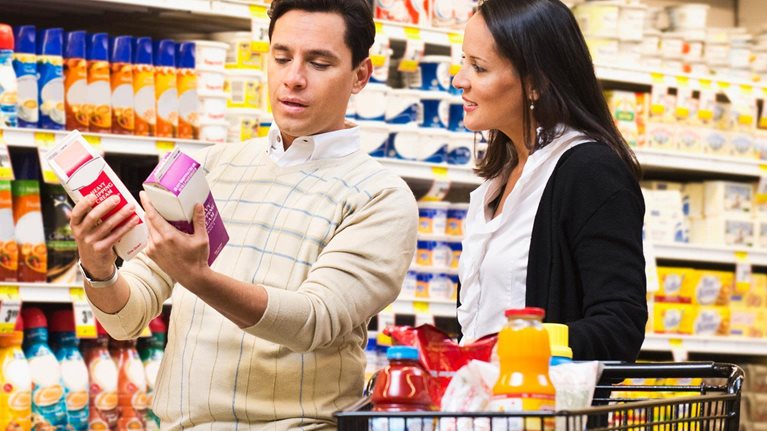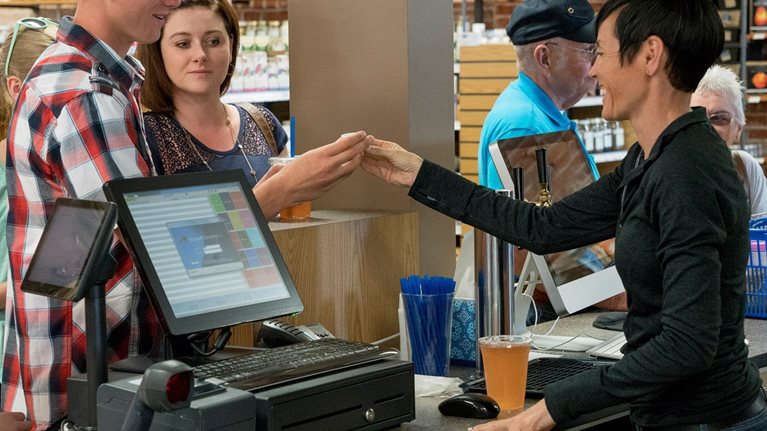More consumers around the world are enjoying a sense of financial stability. In our third annual Global Consumer Sentiment Survey, conducted in September 2017 in 29 countries,1 respondents were more upbeat about their finances compared with the previous year. Fewer consumers said they were delaying purchases, cutting back on spending, and feeling uncertain about the economy. Across the globe, more consumers said they traded up to more expensive brands, while fewer consumers reported trading down to cheaper options (Exhibit 1).

The results of our latest survey indicate a further strengthening of the trends we summarized in our May 2017 article. For instance, the shift to e-commerce is happening even faster than it was last year, not just in China and India but almost everywhere. And it’s happening not only among affluent consumers but across all income tiers.
In addition, the latest survey results highlight three interesting trends that have implications for how consumer-packaged-goods (CPG) companies and retailers should pursue growth. More than half of consumers said they changed their buying behavior in one way or another within the past year. Specifically, we found that consumers are continuing to abandon midmarket brands, thrift manifests itself in different ways in different parts of the world, and health-conscious consumers aren’t necessarily buying natural or organic products.
Still moving away from the middle
Consumers continue to either trade up or trade down, moving away from midmarket brands. Although globally the trade-up trend is slightly stronger than the trade-down trend, the survey results show vast differences at the country level. Last year, when we saw a marked increase in trade-up behavior among Indian consumers, we predicted a continuation of that trend—driven largely by rapid urbanization, the expansion of modern retail outlets, and premiumization in several CPG categories including beauty products, beverages, and packaged food. Indeed, the latest survey shows that India had the highest trade-up rate, at 25 percent (Exhibit 2).

Turkey and China, too, had trade-up rates of 20 percent or higher. Turkish consumers have been active up-traders over the past two years. In the 2016 survey, the trade-up rate in Turkey was 26 percent; the latest figure is, unsurprisingly, down slightly, due to tougher economic conditions in Turkey. In China, gains in consumer confidence have led to increases in discretionary spending. A mere 2 percent of Chinese consumers said they traded down.
In some Latin American and African countries, on the other hand, trade-down rates were upward of 20 percent, whereas trade-up rates were in the single digits. Consumer companies should note that in these developing economies, down-traders often opted for lower-priced branded products rather than retailers’ private-label products. Take nonalcoholic beverages, for instance: only 19 percent of down-traders in Latin America said they switched to private-label products in this category, whereas in North America, 73 percent of down-traders did so. We observed the same pattern in a number of other CPG categories, including food and household products. CPG manufacturers should therefore consider launching—and aggressively marketing—branded products in entry-level price tiers in these countries.
What it means to be thrifty
The most prevalent changes in spending behavior varied greatly by country. Even among consumers who sought to save money, the preferred methods for doing so weren’t necessarily the same from one country to the next.
Would you like to learn more about our Consumer Packaged Goods Practice?
In many countries, including the United States,2 39 percent of those who reported a change in buying behavior said they still buy their preferred brands but at stores with lower prices. Compared with 2015, fewer US consumers said they waited for discounts or clipped coupons, suggesting that US bargain hunters, once they’ve found a cheaper retailer, begin to spend more freely at that retailer. This trend underscores the importance of channel strategy for CPG companies: they need to build a strong presence in channels that are perceived as low priced, such as club stores, discounters, and certain online retailers.
By contrast, in China, consumers were less likely to switch stores to save money. Instead, they opted to buy their preferred brand in smaller quantities. Globally, almost one in four consumers said they do this. Many consumer-goods companies have introduced smaller pack sizes, allowing consumers to sample—and, in time, become loyal to—established brands. Colgate-Palmolive, for instance, has long sold its oral-care and household products in small packets and sachets. In Central and West Africa, Nestlé launched an initiative called My Own Business, through which entrepreneurs sell hot coffee by the cup from specially designed backpacks. The initiative has made loyal Nescafé drinkers out of consumers who might not be able to afford an entire tin of instant coffee.
The waning appeal of ‘natural’ and ‘organic’
Worldwide, 31 percent more consumers said they’re eating healthier food, continuing a trend we’ve observed over the past two years. However, the latest survey results also show that consumers today aren’t necessarily equating healthy eating with buying products that are labeled “natural” or “organic.”
In Western Europe, there is still some growth in natural and organic products. For example, in Italy and France, survey respondents who claimed to have increased their purchases of natural and organic products outnumbered those who said they’d reduced such purchases, by 13 percent. Western European consumers are also continuing to show greater interest in buying locally sourced food.

What’s new—and what’s next—in consumer behavior around the world?
But in the United States, consumers seemed not to be too concerned about whether food products are labeled either natural or organic, or whether they’re locally sourced. Instead, among US consumers, eating healthy increasingly means carefully reading nutrition information and ingredient lists. This is in part because more US consumers are adhering to a specific “food lifestyle”: another recent McKinsey survey showed that 10 percent of consumers across all age groups say they stick to a low-carb or high-protein diet (Exhibit 3). Some consumers eat only dairy-free foods. Other food lifestyles include gluten-free, vegetarian, and paleo.

CPG companies are responding to this trend, either by launching new products and brands of their own or by acquiring smaller, fast-growing health-and-wellness players. General Mills now has nearly 1,000 gluten-free options in the US market alone. Mars took a minority stake in KIND Snacks, which was among the first companies to participate in the “clean labeling” movement (meaning that its list of ingredients is typically short, simple, and contains no artificial additives).
Our annual survey provides a snapshot of consumer sentiment and evolving consumer behavior, with important nuances by country and region. Companies that stay keenly attuned to how consumers are feeling and how they are making purchase decisions will be best able to plan for—and capture—profitable growth.


